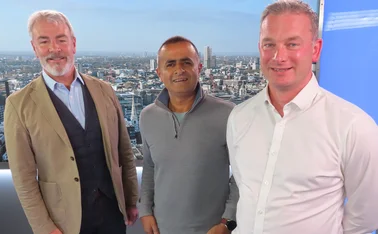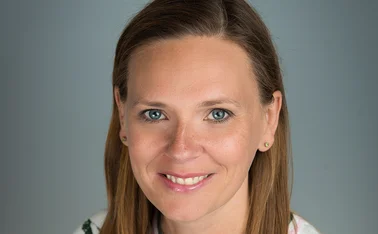
Roundtable: The personal lines insurer of the future?

Need to know
- At the top end, you've got people still sending letters in the post, and at the bottom end you've got graduates that want to deal in Snapchat and Instagram
- Customers may also want to deal with insurers in different ways, depending on where they are in the life cycle
- Balancing costs and service is a challenge in every aspect of insurance
Digital transformation has become a hot topic in the insurance industry in recent years, with insurers becoming increasingly aware of the need to adapt to the changing technological landscape.
Post, in association with Fujitsu, invited 11 industry experts to discuss what the personal lines insurer of the future might look like, and how the relationship between consumer and insurer may change.
 Fujitsu’s insurance lead Mark Boulton opened the conversation, saying: “We believe that customers are striving to connect with organisations in a more customer-focused and friendly manner.
Fujitsu’s insurance lead Mark Boulton opened the conversation, saying: “We believe that customers are striving to connect with organisations in a more customer-focused and friendly manner.
“The challenge we have is at this point is there is such a divergence of people, in age groups and also in the way that they want to communicate.
“So, at the top end, you’ve got people still sending letters in the post, and at the bottom end you’ve got graduates that want to deal in Snapchat and Instagram. So this is a pinnacle point in the development of the customer journey.”
Communication approach
AIG’s head of claims personal insurance Mark Taylor agreed, saying: “Do you
want to just have a text message? Some people still want a phone, and when you
set up your communication lines with your policyholders, you need to have that flexibility.
 “You need to, from the outset, ask the customer how they would like to be communicated with. Sometimes people really just want a straightforward phone call, or even just email communications. That is something we really need to bear in mind.”
“You need to, from the outset, ask the customer how they would like to be communicated with. Sometimes people really just want a straightforward phone call, or even just email communications. That is something we really need to bear in mind.”
Ageas strategic development director Elliot Biggs agreed: “That’s the point, isn’t it? There’s not a one-size-fits-all kind of approach that you can take, and to do so is quite a dangerous approach. Customers want to deal with insurers in different ways, depending on where they are in the life cycle.”
ERS chief operating officer Tim Yorke said: “There’s got to be a commercial component to this though. If you look at the motor market over the last 30 years, it’s made money just once.
“I get that people do want total flexibility, and that ability to do everything every single time, but we have to have some kind of commercial basis for doing that.
“We have used a lot of technology to create a situation where there’s been a race to the bottom, certainly in motor. There’s almost no differentiation, and nobody makes any money. So the basis for it has got to be commercial.”
Taylor noted that balancing costs and service is a challenge in every aspect of insurance, and that that was a challenge the industry would always face.
Markerstudy’s head of enterprise architecture Lou Lwin said: “There’s still a fundamental problem with insurance, in that people don’t understand the terms that we use. People say: ‘Do you know what? I’m going to get on the phone, I’ll ask all the questions.’
“So, if we can solve that problem, and it might be through this kind of technology, then you’re in a far better position to start being true omni-channel.”
 Alberto Chierici, co-founder and chief operating officer of Spixii, said: “Our company is very young. We started one year ago, and the starting point of our company was ‘let’s scrap any idea we have on technology, let’s just start to interview people, and spend time with the guys on the street’.
Alberto Chierici, co-founder and chief operating officer of Spixii, said: “Our company is very young. We started one year ago, and the starting point of our company was ‘let’s scrap any idea we have on technology, let’s just start to interview people, and spend time with the guys on the street’.
“We spent a month just talking to young professionals in offices, in universities for students, and in coffee shops in London, and we developed our technology around them. What we found is that a lot of the points you mentioned are very true.
“For example, young professionals prefer a do-it-yourself approach for many products, especially the most common ones such as motor, travel, or housing insurance, but for life insurance or other products, they want a phone call.”
Big Data
The conversation moved onto the emergence of Big Data. Following a review the Financial Conduct Authority last year found broadly positive consumer outcomes resulting from the use of Big Data.
 The regulator noticed, however, that certain categories of customers may find it harder to obtain insurance as a result of the changes to risk segmentation arising from data use.
The regulator noticed, however, that certain categories of customers may find it harder to obtain insurance as a result of the changes to risk segmentation arising from data use.
Direct Line’s head of connected homes and product innovation Jenny Trueman said: “We want all the data, everybody wants that data, but who is going to give it to us? How are we going to get it? And, actually, what is that value exchange for the data with the consumer?
“On telematics, it’s kind of obvious: I can’t really afford my premium, you’ve given me a way to afford my premium, and I have to have that to drive my car. It’s much less obvious in home, that’s one of the big things that we have to understand.”
Fujitsu’s insurance account manager Kathy Weir pointed to the increasing volume of customer data becoming available to insurers through wearables: “Certainly in the younger culture, and with the rise of things like Fitbits, you can get a statistic for virtually every single thing.
“It depends upon what consumers get back from it to allow insurance to come in, whereas in telematics, like you said, there is a reason already there for it.”
AIG’s chief underwriting officer, group personal insurance, Ian Slater said: “The proposition with auto data is the same for homeowners, because through connected devices we’re going to know far more about when people are home. So you really can start to segment, so the price people are paying more accurately reflects the risks they’re bringing to the pool.”
Hiscox head of UK claims Eva Berg-Winters agreed, adding: “Then as their risk profile changes, you can dynamically assess that and adjust to it, which is also something we aren’t doing yet.
“What if suddenly the customer starts going out each evening, because something in their life has changed? Are we picking up on it? Or, are we so focused on the first sale and the first risk assessment?”
 Yorke said: “That’s the thing that’s going to change dramatically. We’re
Yorke said: “That’s the thing that’s going to change dramatically. We’re
going to have a much, much richer set of data about each individual customer, that will transform the way we interact with them and how much money it’s worth spending on each of those individual customers to do that.”
Rob Flynn, More Than managing director, said: “We employ a behavioural psychologist in our telematics team, to start understanding some of these things that we’re doing in a bit more detail. Sequential bad driving scores will end up with your policy being cancelled, but there’s a series of warnings that happen first.
“Last year we sent out about 15,000 warning notices. We’ve only actually cancelled about 600 policies. So, actually we’ve changed a lot of people’s driving there.”
The group began to discuss new entrants to the market, and whether tech-focused start-ups should be seen either as a threat or an opportunity by incumbent insurers.
By September last year investment in insurtech had already tripled that of the whole previous year, with more than £16.5m flowing in to support start-ups.
There has been a 32% year-on-year increase in the number of insurtech deals with a total of £1.35bn invested into the space over the course of the last year, according to Tällt.
Taylor said: “It’s all about how we respond to the challenge. We can all say ‘it’s rubbish’, but it might be the greatest thing ever. You look at Uber, with the black cabs in London, that’s a great example; you’ve got to start responding.
“We as an industry have to respond to these new entrants and what they’re doing, and see what works for the customer and what doesn’t. We can’t just say ‘we’ve done this for years, we’ll do it this way’.”
Trueman agreed: “That’s right; you’re right, it’s got to change. I challenge myself all the time over the fact that I think like an insurer. How do I stop thinking like an insurer? But I also don’t think we should react unnecessarily. So, there’s that balance.”
 Biggs said: “Our strategy should be not necessarily one of defence against new entrants and start-ups, it should be one of how we engage with the customer in a meaningful way. If new entrants in the fintech and insurtech space can help in solving that problem, then absolutely we should embrace it.
Biggs said: “Our strategy should be not necessarily one of defence against new entrants and start-ups, it should be one of how we engage with the customer in a meaningful way. If new entrants in the fintech and insurtech space can help in solving that problem, then absolutely we should embrace it.
“But we shouldn’t be too concerned as an industry with defending the established from the start-up. We should embrace it where it’s appropriate.”
Trueman agreed: “That’s right, I don’t see that relationship as a threat, and it’s got to work together because all the start-ups and insurtech bring something that we might not have, but we bring something that they don’t have. That’s got to be a positive.”
Cross-selling failure
Yorke said: “One of the reasons we’ve failed to cross-sell is that we’ve dealt with everything in the old-fashioned way, which is that we’ve priced it on the basis of our understanding of the risk for that particular policy.
“We should take a lot of that into consideration when changing the way that we think about a risk that’s being presented to us. And that’s often because we haven’t kept a lot of useful data on a motor policy, for example, that would help us assess the risk of someone who might be buying a household policy.”
Taylor said: “This is why we should be looking at the challenges, and responding to them, not just pushing it all to one side. Because we won’t exist. There’s a different way.”
Lwin agreed: “That’s exactly it, isn’t it? It’s that data challenge. Going back to your original point, it’s the fact that we don’t investigate the data that we hold, or we don’t know what we’ve got, and therefore we don’t use it. We don’t monetise it in any way, shape, or form.
“But certainly, from a risk management point of view, and from a claims point of view, for anti-fraud, we found Big Data very successful. When we first started to use Big Data to analyse what we could, within about eight months, we saved over five million claims.
“Now, in the big scheme of things, it might not be huge, but it was a really good starting point to say, actually, this is now paying dividends, especially compared to the amount of effort that we put in. So that gave us a lot of triggers, if you like, to start exploring other avenues.”
Flynn agreed: “We sell a cyber commercial line at the moment, and we’ve seen some interesting stuff with some of our technology partners, that does absolutely move you down the route of asking how this could be a personalised product at some point.
“You could imagine it would start with exposed individuals, politically high-profile types. Seeing what can be done in parts of the web that we can’t typically access is quite scary.”
Biggs said that in his view insurers are at risk of approaching technology the wrong way: “I often feel we get it totally the wrong way around. We get excited about the technology – the technology is an enabler – but we’ve got to understand what the problem is we’re trying to solve. General insurance has got to do a lot of PR to help reconnect with customers, and help customers remember why we exist.
“If technology is an enabler to do that, then that’s great, but if it’s just something that we get excited about because we think it will help us, we just do more to damage that relationship with the customer.”
Boulton concluded by saying: “For me, some of the kernels of what we talked about are where the main disruption is going to come from. I would suggest that most people would take the view ‘well, let’s get on and do it’.”
Only users who have a paid subscription or are part of a corporate subscription are able to print or copy content.
To access these options, along with all other subscription benefits, please contact info@postonline.co.uk or view our subscription options here: http://subscriptions.postonline.co.uk/subscribe
You are currently unable to print this content. Please contact info@postonline.co.uk to find out more.
You are currently unable to copy this content. Please contact info@postonline.co.uk to find out more.
Copyright Infopro Digital Limited. All rights reserved.
As outlined in our terms and conditions, https://www.infopro-digital.com/terms-and-conditions/subscriptions/ (point 2.4), printing is limited to a single copy.
If you would like to purchase additional rights please email info@postonline.co.uk
Copyright Infopro Digital Limited. All rights reserved.
You may share this content using our article tools. As outlined in our terms and conditions, https://www.infopro-digital.com/terms-and-conditions/subscriptions/ (clause 2.4), an Authorised User may only make one copy of the materials for their own personal use. You must also comply with the restrictions in clause 2.5.
If you would like to purchase additional rights please email info@postonline.co.uk








